Skift Take
Billionaire Petter Stordalen's new hotel in Oslo, Sommerro, and his soon-to-open sister property, Villa Inkognito, are noteworthy. They take the experiential travel trend in new directions.
It’s trendy for hotels to try to create a live-like-a-local experience for travelers, but Sommerro House in Oslo, which launched in September 2022, will prompt its rivals to level up their games.
A project backed by the Scandinavian billionaire Petter Stordalen, Sommerro is a 231-room “neighborhood hotel” — meaning that it’s full of offerings for locals, like a cinema, a library, and even a restored public bath. It hopes that the hotel appeals to nearby residents as well as travelers who want to feel like residents, too.
“The hotel is housed in an old office building for an electric company,” explained Siri Løining, brand director. “Locals used to come into the building and pay their bills.”
Sommerro, which is dripping in Art Deco detail, hopes to keep the neighbors coming in — now paying for food and drinks, rather than energy.
“When we started this project, we asked, ‘How do we bring the locals into the house, so they feel a part of the project?’,” Løining said.
So far, Løining said they’ve hit a nerve — in a good way — and Sommerro is growing, with the new Villa Inkognito, a restored 18th-century villa located adjacent to the property, opening on April 17.
House of Experience
Sommerro has been described as “like walking into the film set for a period Agatha Christie movie.” It belongs to a category of narrative-driven, design-led hotels that Oslo could use more of. The hotel is well situated for travelers — a five-minute walk to the city center and behind the Royal Castle. But it’s also next to a residential area with 60,000 inhabitants.
When Norwegian billionaire Petter Stordalen — who owns Strawberry, a hotel and retail investment corporation that runs Nordic Choice Hotels, Thomas Cook Northern Europe, and other businesses — saw the electric company building near his own office space go up for sale, he snapped at the opportunity.
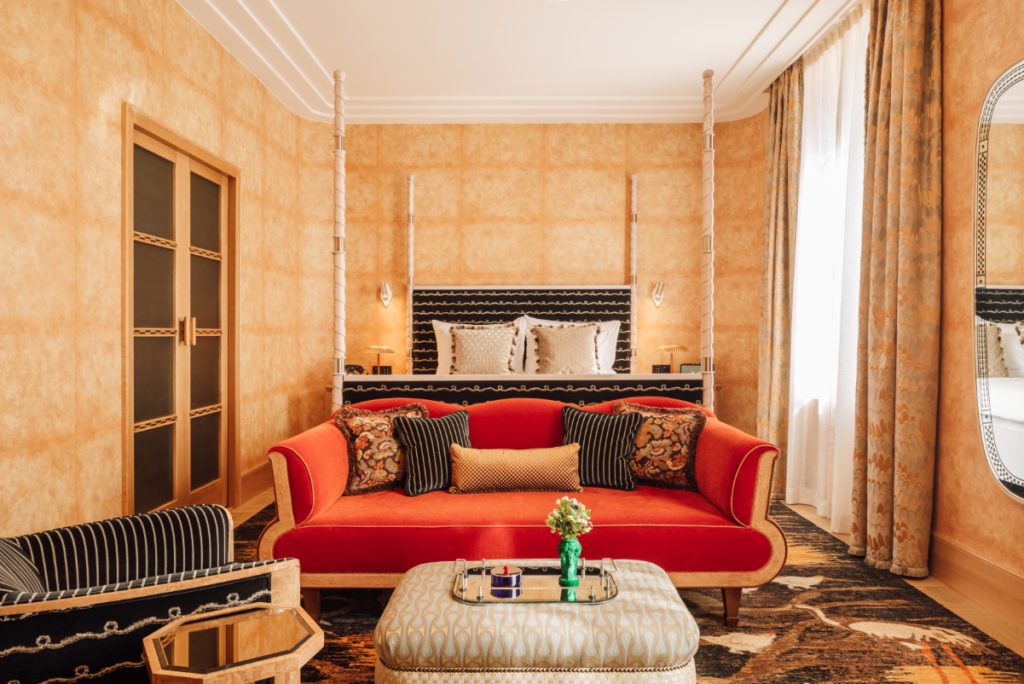
“You can’t buy soul, and it’s there in this property,” said Løining. “You can uncover the history, which makes it a unique opportunity, compared to just another building that’s new,” said Løining.
Part of that soul is in the design. The building was constructed in the 1920s, with many of its Art Deco elements remaining intact. But also, part of that soul includes neighbors who have distinct memories within its walls.
“An elderly woman came in, and she said ‘I learned to vacuum clean here!’” said Løining. “She took a training course in the building. She was in her eighties and so proud.”
Playing on this nostalgia means creating new experiences to keep locals coming back. The goal, she said, is for locals to have an attachment to this place. She doesn’t see it as a hotel, but rather a “house of experiences.”
“You’ll have someone listening to a live jazz band after work, a pensioner couple wanting a drink and a cozy place to sit, or parents with strollers, meeting for a coffee,” Løining said. “We strive to have that essence, that travelers and the neighborhood are alike here.”
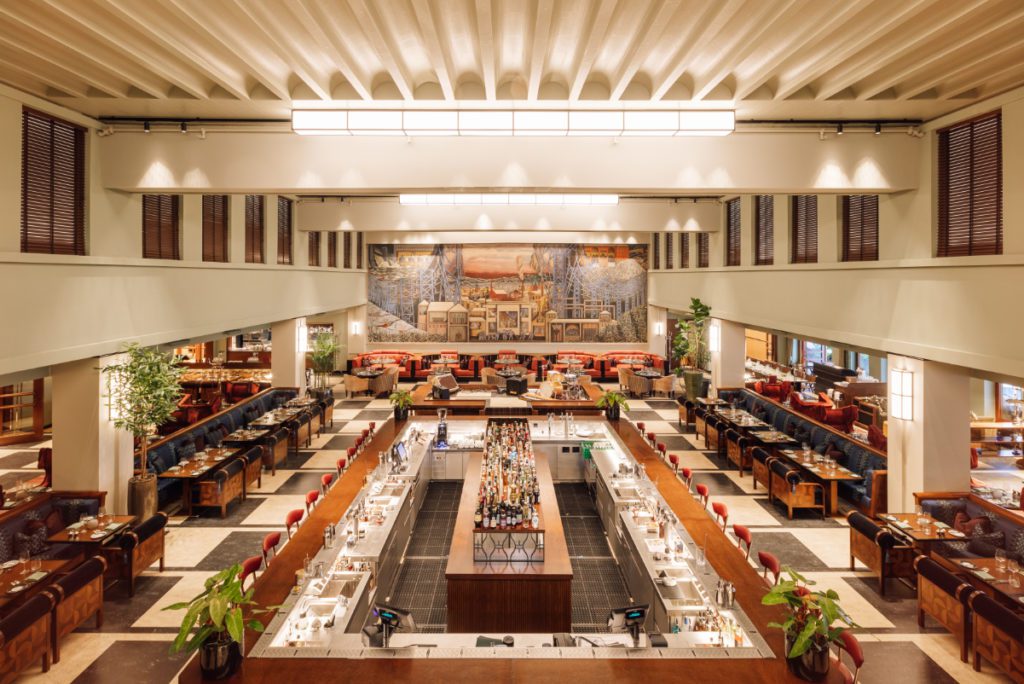
Déjà Vu for Locals and Visitors
One of the experiences unique to the project was the refurbishment of the original public bath, called Vestkantbadet.
“In the ’30s, a lot of people were poor, and housing didn’t have proper baths,” said Løining. “So when the electrical building opened, they had to put a public bath in the basement, for residents to swim and wash.”
This iconic bath soon became a public meeting point, where children could learn to swim, or locals would come to exercise — or just rinse off.
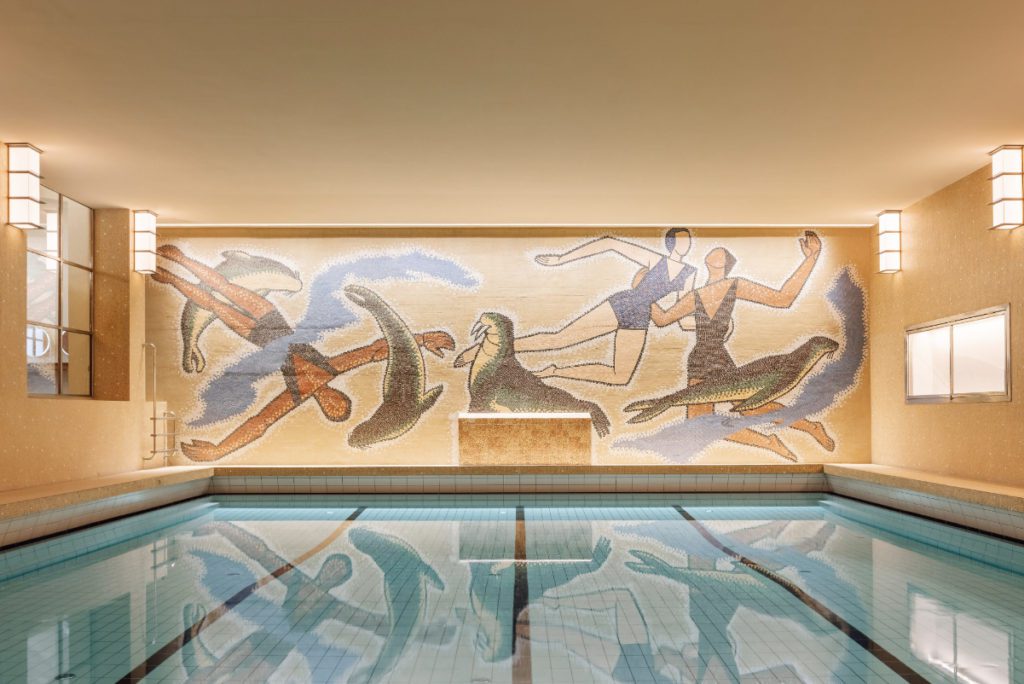
And its original mosaic of women splashing with seals, designed by artist Per Krohg (a Norwegian artist known for his mural at the United Nations) survived, after their careful “tile-by-tile” restoration process.
“It’s a 90-year-old bath, and it’s a masterpiece that was designed back when they did huge things,” said Løining.
Some visitors have even commented, “‘I learned to swim here, and I can’t believe you re-opened it,’” Løining said.
While the hotel has been wise to emphasize that the bath isn’t just for hotel guests, the mayor helped re-open the bath after all, Sommerro has extended the wellness offerings, to appeal to travelers too, with a gym as well as rooms for treatments.
“I hope after this refurbishment it lasts for another 100 years,” said Løining. It’s a trend now, she said, to ask, ‘How do we build hotels that we don’t have to renovate every five to 10 years, and what materials can we use that will last and will be beautiful decades later?’”
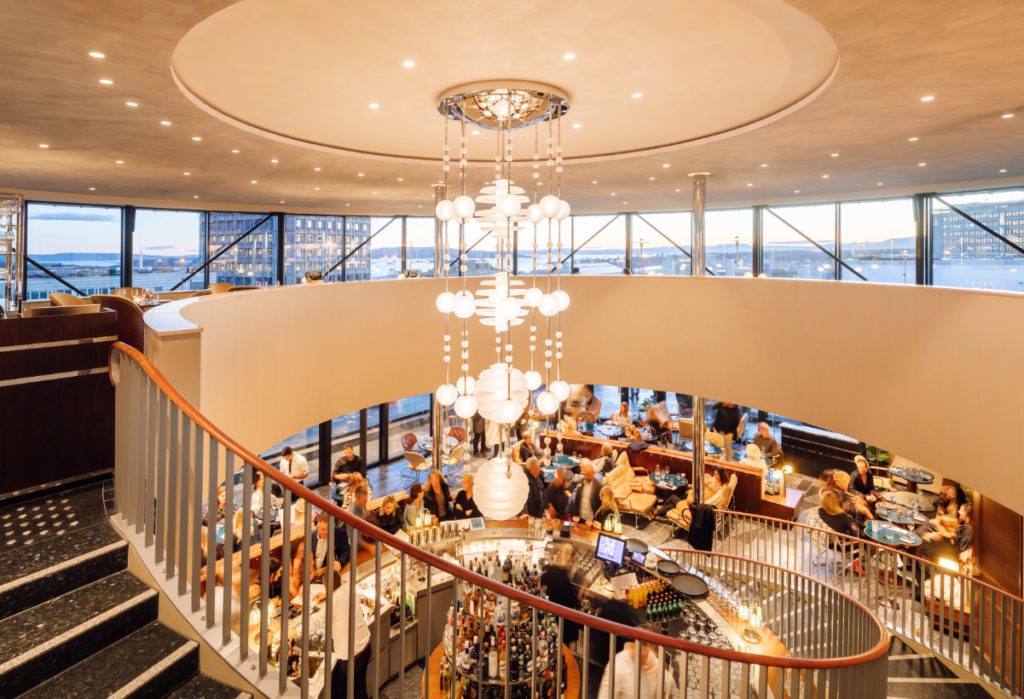
Scandinavian Style to the Fore
To help preserve the building’s Art Deco elements and layer in contemporary Norwegian design in a fresh way, Sommerro hired GrecoDeco, a design team based in London and New York.
“They did such extensive research, and traveled around Norway and Scandinavia, looking for inspiration from that time period,” said Løining. Guest rooms, for example, take inspiration from Norwegian artist Gerhard Munthe and Norwegian furniture design from the early 1900s.
“Most people know about French Art Deco, but very few know of the Scandinavian Art Deco movement, and they managed to bring forward the artwork, textiles, and furniture, to create these amazing interiors,” said Løining. “It gives us the opportunity to tell the story from the time period and showcase designers from Scandinavia.”
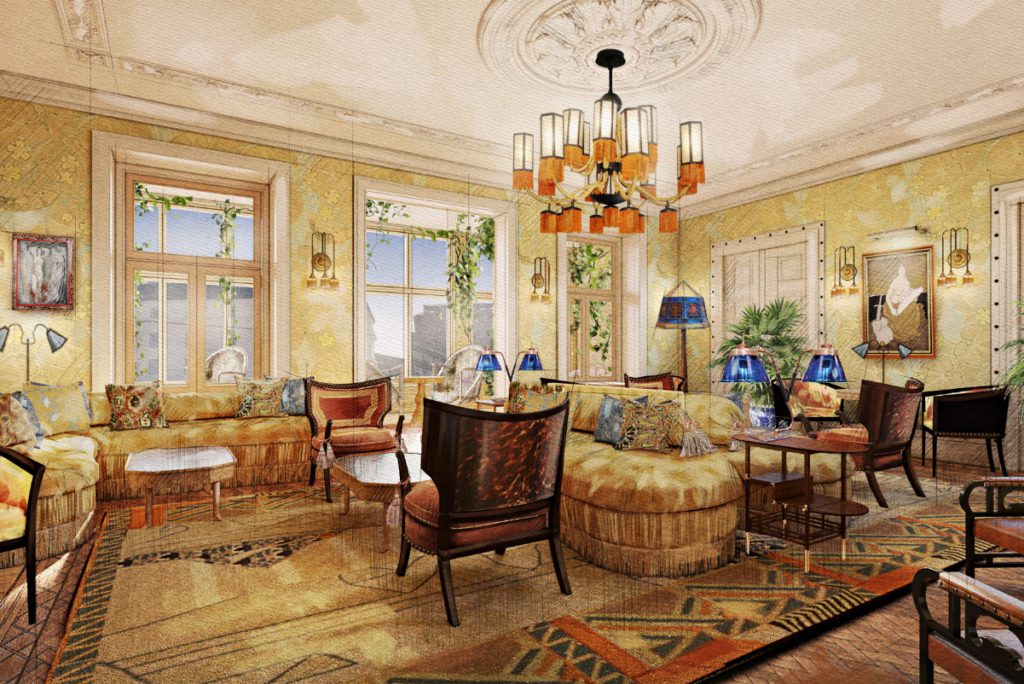
Villa Inkognito
With the newest opening, Villa Inkognito, the GrecoDeco team is giving it a completely different look, considering the building is older and constructed in the 1800s.
“The villa is a mixture of different designs [from Italian Renaissance to Greek Classicism], so they say that with each room you come into a different world, like the Wizard of Oz,” said Løining.
The villa is located next door to Sommerro but attached with a bridge to the main house. When the electrical company owned it, they used the villa as an administration office, and after that, it became the Algerian embassy.
The plan with Villa Inkognito is to create a space for guests to book in its entirety — for a “secret hideaway in Oslo,” said Løining. There was talk of turning it back into office spaces, but Løining had a different idea. “I said, ‘We could make this into a private house, with a private chef, but you can have the facilities of the hotel when you want to go on stage,” said Løining.
Villa Inkognito is geared toward a high-end market made of management teams running company retreats, embassies holding events, visitors to the nearby Royal Castle needing stays, or deep-pocketed tourists. Still, because of its connection to Sommerro, the sentiment is that even these travelers might want to connect with locals and take advantage of the neighborhood vibe.
“The trend is local and authentic, and we’ve seen that the hotels that did the best in the pandemic were authentic, and appealed to locals,” said Løining.
Given the building’s uniqueness, there won’t likely be a chain of Sommerro hotels. But, its owner, Stordalen, would be wise to use this formula again when developing future projects. For more context, see the Skift 2023 Megatrend “Hotels Make Emotion the New Brand Standard.”
Have a confidential tip for Skift? Get in touch
Tags: boutique hotels, design, experiential, experiential travel, future of lodging, hotel design, local, localization, norway, oslo, scandinavia
Photo credit: Norwegian billionaire Petter Stordalen, who owns Strawberry, a hotel and retail investment corporation, is shown at a new hotel he owns. Source: Sommerro.
